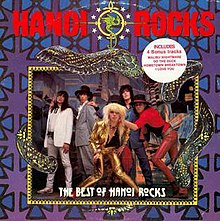옥소모코
Oxomoco옥소모로도[1] 알려진 옥소모코는[pronunciation?] 아즈텍의 신으로 밤의 여신, 점성술, 달력이다. 옥소모코와 시팍토날은 최초의 인간 부부라고 하며, 아즈텍은 인간의 창조와 진화에 관해서 아담과 이브에 비유한다.[2][3] 그들은 필트진테쿠htli라는 이름의 아들을 낳았는데, 그는 소치케탈의 딸인 처녀와 결혼했다.[4] 나이든 여자로서 그녀는 또한 Itzpapalotl로도[pronunciation?] 알려져 있었다.[3]
이름의 기원
INAH의 라파엘 테나 박사는 옥소모코라는 이름을 "첫 번째 여자"로 번역했는데, 이것은 나후아틀로 변형된 후아스테크어라고 한다. Uxumocox; Uxum(여자)과 Ocox(첫 번째).
묘사
옥소모코와 시팍토날은 쿠오티틀란 아즈텍 연보에 언급되어 있으며, 달력을 담당하였다.[5] 그들은 또한 포폴 부흐 내와 같은 퀴체 전설에도 등장한다.[6] 니카라과 페르난데스 데 오비에도 이 발데스와 같은 일부 학자들은 시팍토날은 실제로 암컷이고 옥소모코는 실제로 수컷이며 그 중 하나를 타마가스타드라고 지칭했다고 주장한다.[3] 에브라임 조지 스퀴어, 프랭크 E와 같은 니카라과 관점의 다른 학자들. 비교토는 또한 옥소모코가 수컷이고 시팍토날 암컷이라고 주장하면서 그들이 마법사와 마술사였다고 주장한다.[6] 타모안찬에 머물렀던 4명의 무당들의 나후아틀 용어는 여자였던 옥소모코를 제외하고는 gender가 되지 않는다.[7] 코덱스 보르보니쿠스에서는 옥소목(Coxomoc)이 시팍토날(Cipactonal)과 마찬가지로 보통 그녀의 등에 사제들의 담배 박을 달고 있다.[8] 어떤 묘사에서는 여신이 나비 가면을 쓰고 용기에서 옥수수와 콩을 던지고 있다.[9] 플로렌타인 코덱스에는 옥소모코가 매듭을 지어 장식되어 있다.[7] 모로스의 야우테펙 근처에는 옥소모코와 시팍토날 조각이 눈에 띈다.[8]
참조
- ^ Otilia Meza (1981). Editorial Universo México (ed.). El Mundo Mágico de los Dioses del Anáhuac (in Spanish). México. p. 47. ISBN 968-35-0093-5.
- ^ Austin, Alfredo López (1988). The human body and ideology: concepts of the ancient Nahuas. University of Utah Press. p. 238. ISBN 978-0-87480-260-3. Retrieved 26 October 2011.
- ^ a b c Austin, Alfredo López (1996). The rabbit on the face of the moon: mythology in the mesoamerican tradition. University of Utah Press. pp. 102–6. ISBN 978-0-87480-527-7. Retrieved 26 October 2011.
- ^ "Aztec cosmology". University of Texas. Archived from the original on 11 January 2012. Retrieved 26 October 2011.
- ^ New World Archaeological Foundation (1995). Papers of the New World Archaeological Foundation. New World Archaeological Foundation. p. 227. Retrieved 26 October 2011.
- ^ a b Squier, Ephraim George; Comparato, Frank E. (1990). Observations on the archaeology and ethnology of Nicaragua. Labyrinthos. p. 29. ISBN 978-0-911437-08-9. Retrieved 26 October 2011.
- ^ a b Boone, Elizabeth Hill (2007). Cycles of time and meaning in the Mexican books of fate. University of Texas Press. pp. 24, 25–. ISBN 978-0-292-71263-8. Retrieved 26 October 2011.
- ^ a b Smith, Mary Elizabeth; Boone, Elizabeth Hill (2005). Painted books and indigenous knowledge in Mesoamerica: manuscript studies in honor of Mary Elizabeth Smith. Middle American Research Institute. p. 14. ISBN 978-0-939238-99-6. Retrieved 26 October 2011.
- ^ Nowotny, Karl Anton; Everett, George A.; Sisson, Edward B. (2005). Tlacuilolli: style and contents of the Mexican pictorial manuscripts with a catalog of the Borgia Group. University of Oklahoma Press. p. 61. ISBN 978-0-8061-3653-0. Retrieved 26 October 2011.


